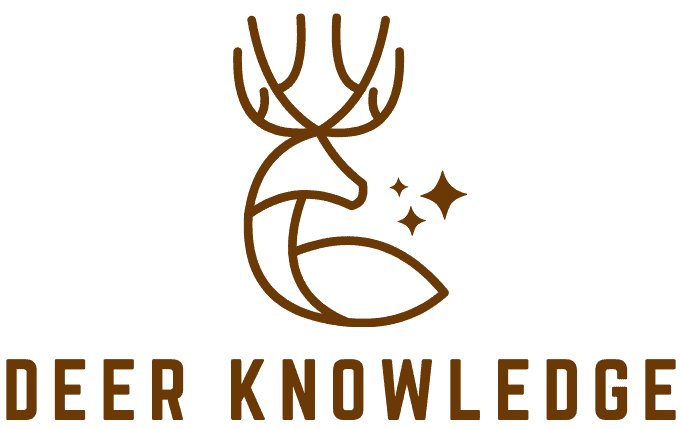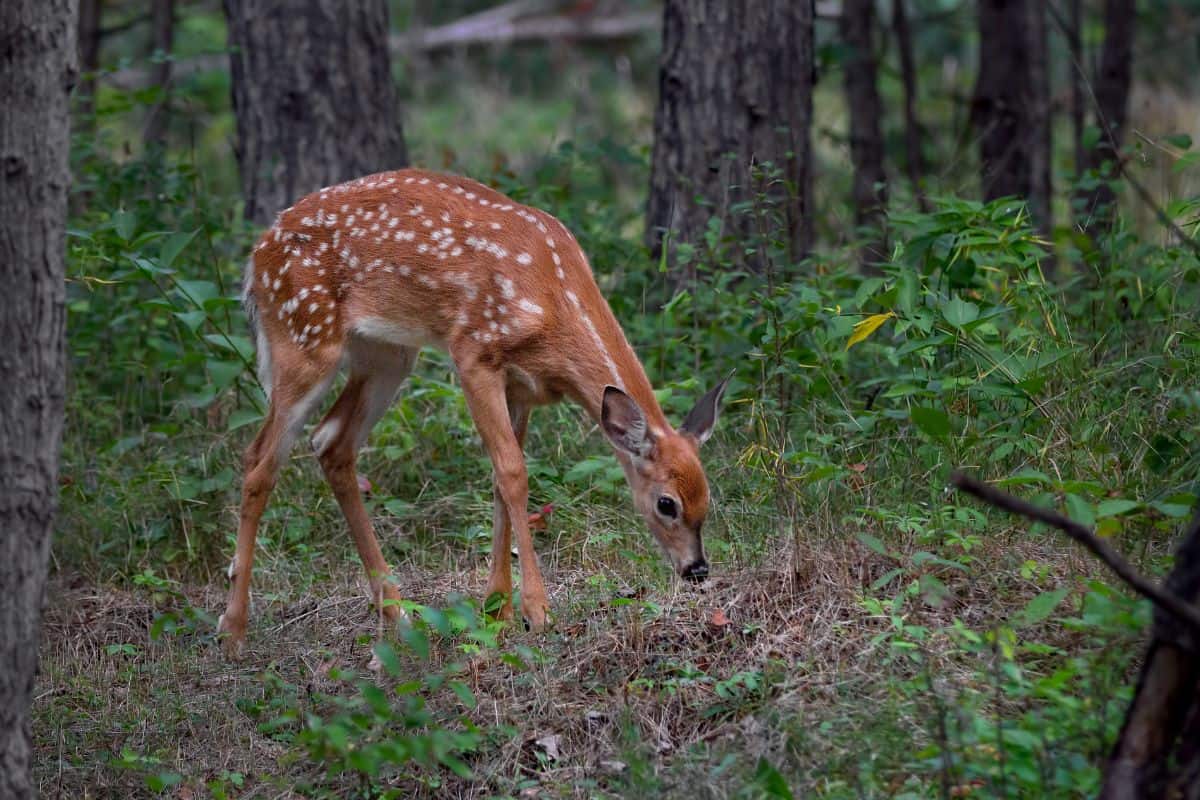Whether you’ve recently watched Bambi or encountered a real baby deer in the wild, you might have noticed that newborn fawns are covered in white spots and wondered why this is the case. You probably thought to yourself, “why do baby deer have spots when their doe mothers don’t?”
Well, the answer is that the spots act as a way to camouflage the fawn from predators when it is still very vulnerable, as we shall now explain in more detail.
Why Do Baby Deer Have Spots?
Fawns are born with a reddish-brown coat dotted with white spots to camouflage themselves on the forest floor while bedding down for long periods. By laying very still for hours on end, the fawn can remain completely undetected by the many predators that roam the forest looking for their next meal.
The white spots on a baby deer are the best line of defense against a predator’s detection – but after a while, they will fade away as the red-brown coloring develops more evenly across their coat. Other defense mechanisms at this early stage of life include slowing breathing and dropping the heart rate.
Members of the public often encounter the doe in this state and wrongly believe them to be abandoned animals with no mother present, but the mother is often out of sight for this very reason.
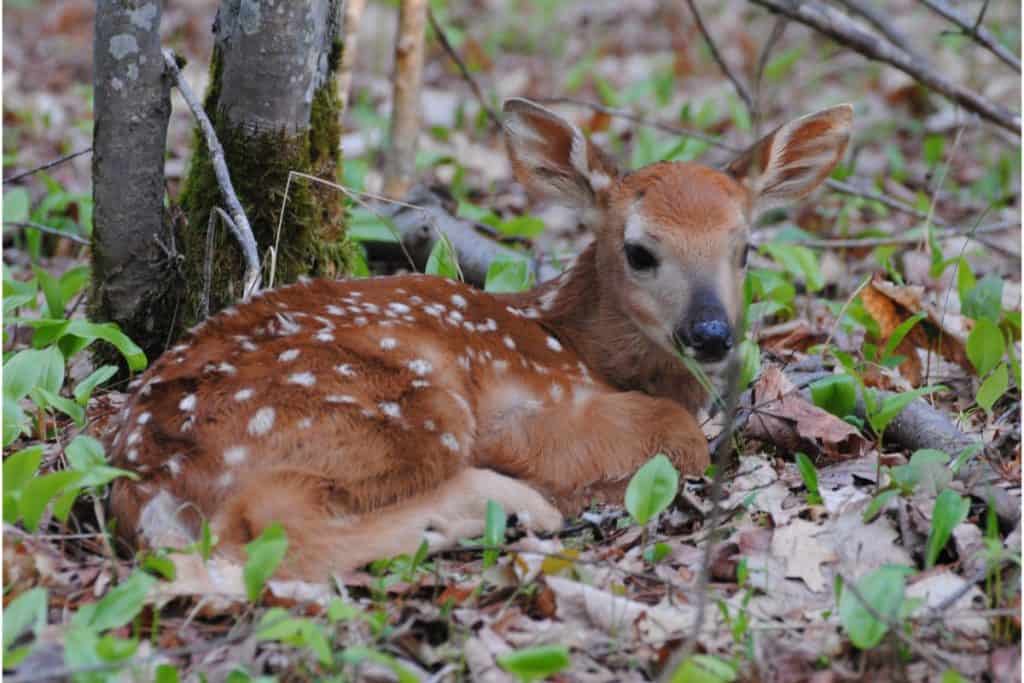
Her presence can attract predators through her scent (fawns do not develop scent glands until a couple of weeks after birth), so she stays away from her fawn as much as possible (although she is rarely more than a few hundred yards away).
A mother will only come back to nurse her young when she is sure that it is safe to do so, which can be as little as four to five times every 24 hours. So if you do happen to encounter a bedded-down fawn, please leave well alone and do not disturb. Chances are the mother is nearby.
If you’re sure the mother will not return (for instance, you’ve encountered a doe carcass nearby), alert local wildlife officials, who can investigate the situation further.
When Do Fawns Lose Their Spots?
Baby deer lose their spots between three and four months of age. There have been numerous sightings of yearlings with spots still in place. However, this is rare. Usually, by the time the animal has reached this age, its coat has fully matured, and the spots have disappeared.
The spots tend to disappear around the same time the mother stops nursing her fawn, which is around the four-month mark. With most deer species giving birth to their young in the spring, the spots will have disappeared entirely by winter, leaving their coats almost indistinguishable from adult members of the same species.
Of course, some species of deer never lose their spots. The European fallow deer, the axis deer (chital), and the sika deer all keep their spots in adulthood.
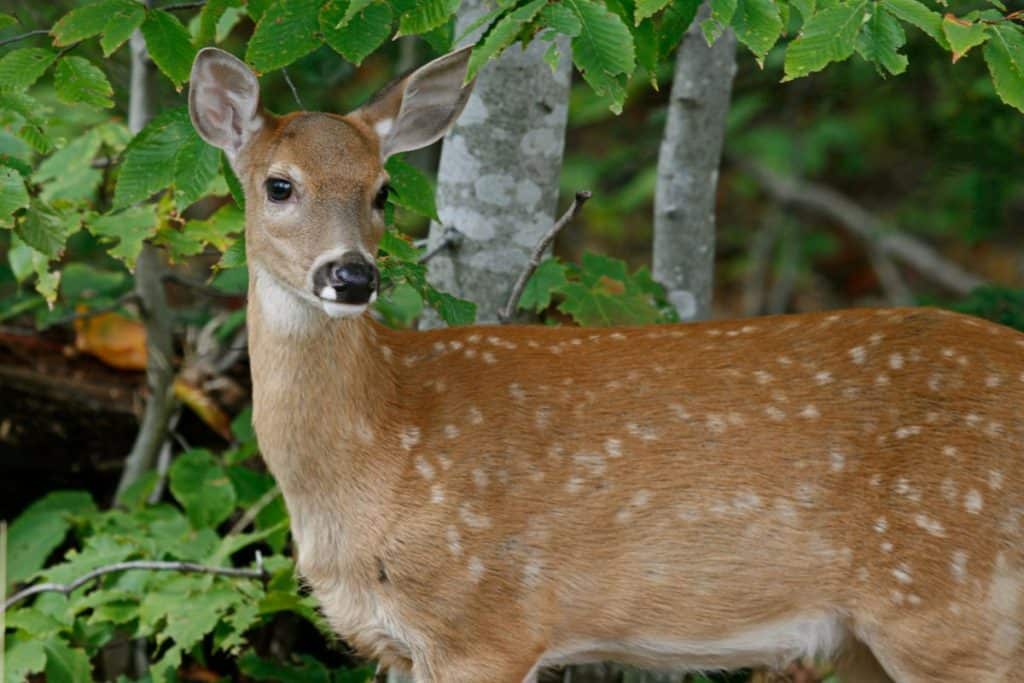
Can You Tell if a Deer is Male or Female by its Spots?
Yes, usually you can. While not an exact science, male baby deer have differentiating characteristics from their female counterparts. Both genders have mottled spots across their back, sides, and hind quarters. However, males also tend to develop spots where they will grow antlers.
Sometimes young males exhibit spots on their foreheads, neck, and shoulders, as well as above their eyes. Though exceedingly rare, there have been sightings of females with one or two white spots in these areas – although this is usually the result of hermaphroditism.
So if you can locate spots anywhere away from the body or torso of a fawn (especially on the head), you are almost certainly looking at a male.
Do All Species of Baby Deer Have Spots?
No, not all species of deer are born with white spots. For instance, moose and caribou (reindeer) calves are not born with spots. Instead, they have their reddish brown adult coat pattern from birth.
There are a few reasons for this – namely, calves of these species feed on fat and nutrient-rich milk from their mothers, meaning they develop far quicker and grow bigger and stronger than their spotted cousins. Young calves from either species can independently browse like their mothers within three weeks.
In short, because they are not as defenseless as baby fawns and have longer legs for running faster to escape predators, they do not need camouflage markings to help them blend in when grazing on their own or as part of a herd.
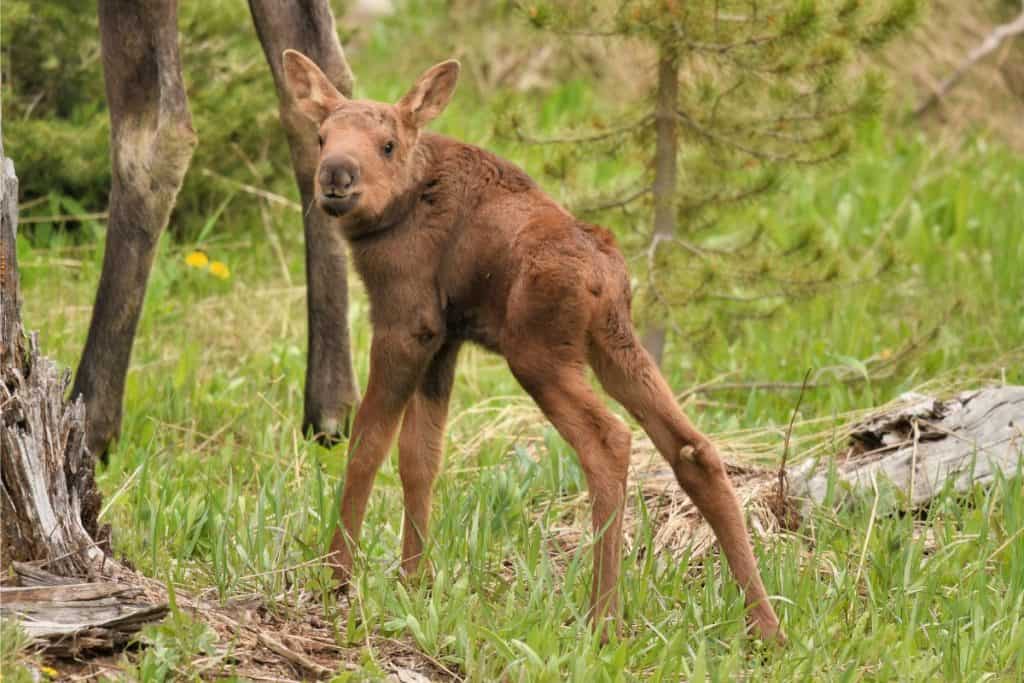
Spots on Baby Deer Recap
To summarize, newborn fawns have a reddish brown coat speckled with white spots to camouflage themselves from predators while sleeping on the forest floor. The white spots on a baby deer are some of the best defenses against a predator’s detection, but they will eventually fade as the red-brown coloring develops more evenly across the youngster’s coat.
The spots tend to disappear between three and four months of age – typically around the time the mother stops nursing the calf – and are replaced with the adult red-brown coloring of the animal’s fur.
However, not all species of baby deer are born spotted – for example, moose and caribou are born with no distinguishable markings at all.
So if you’ve ever wondered why baby deer have spots, hopefully you now have your answer.
